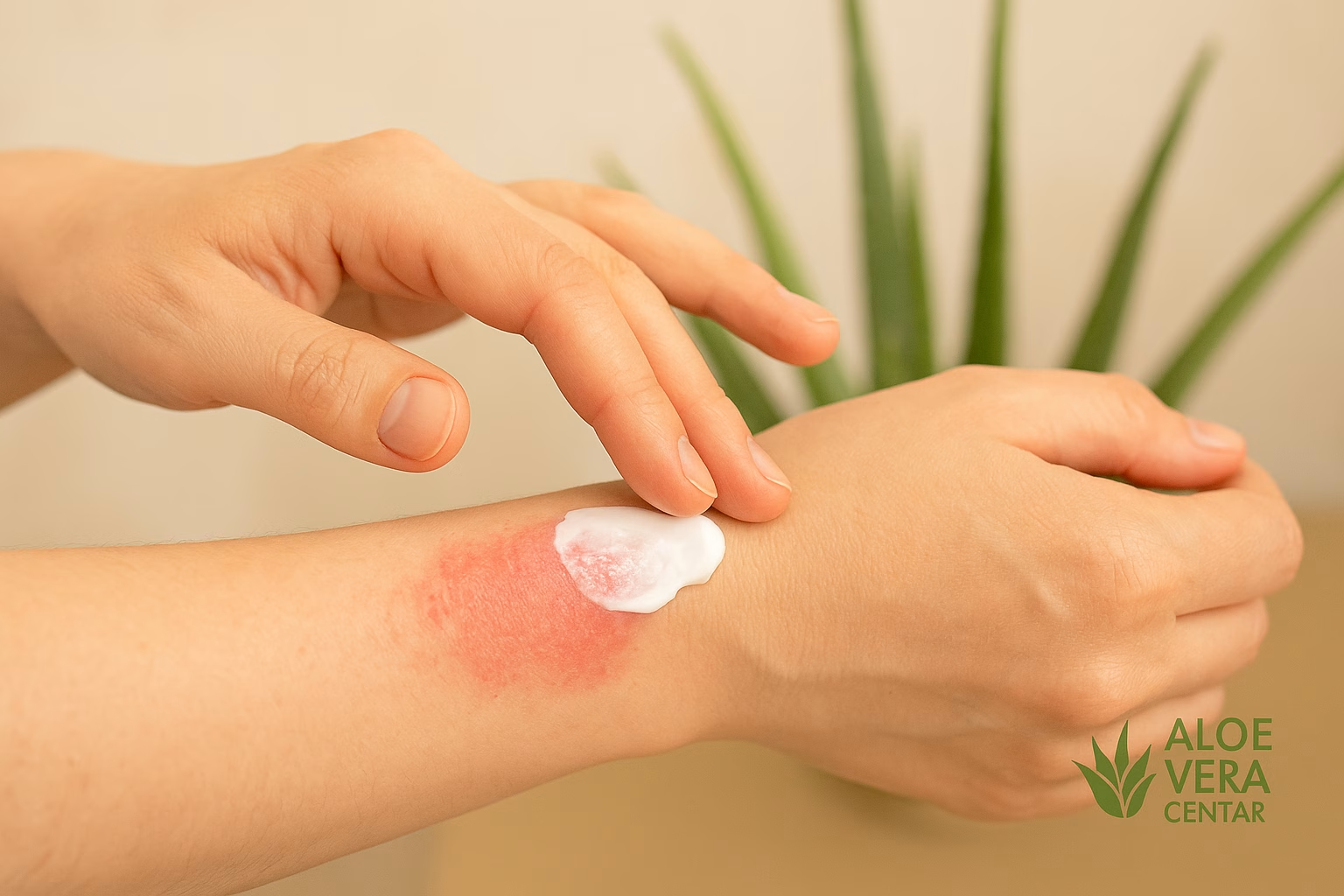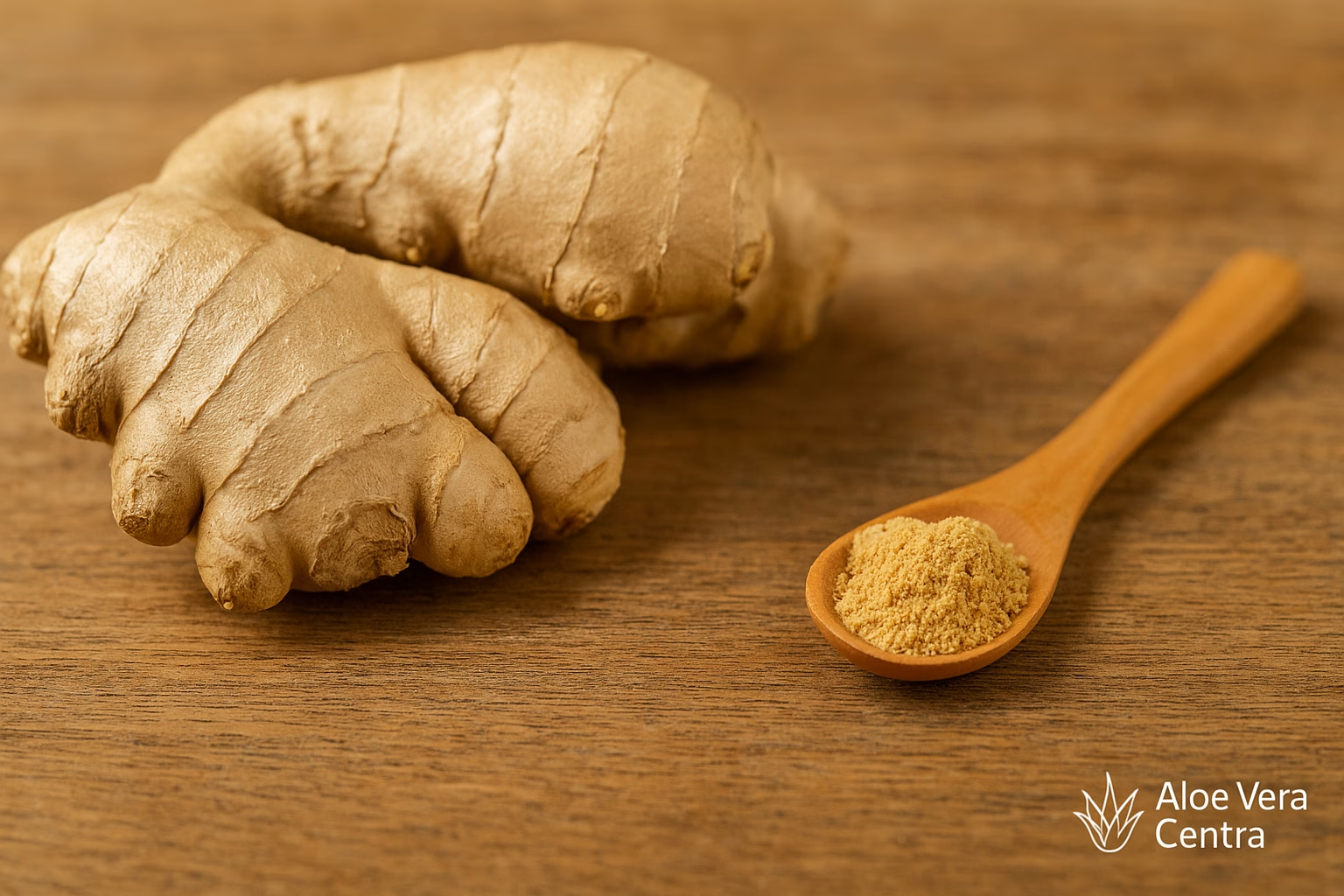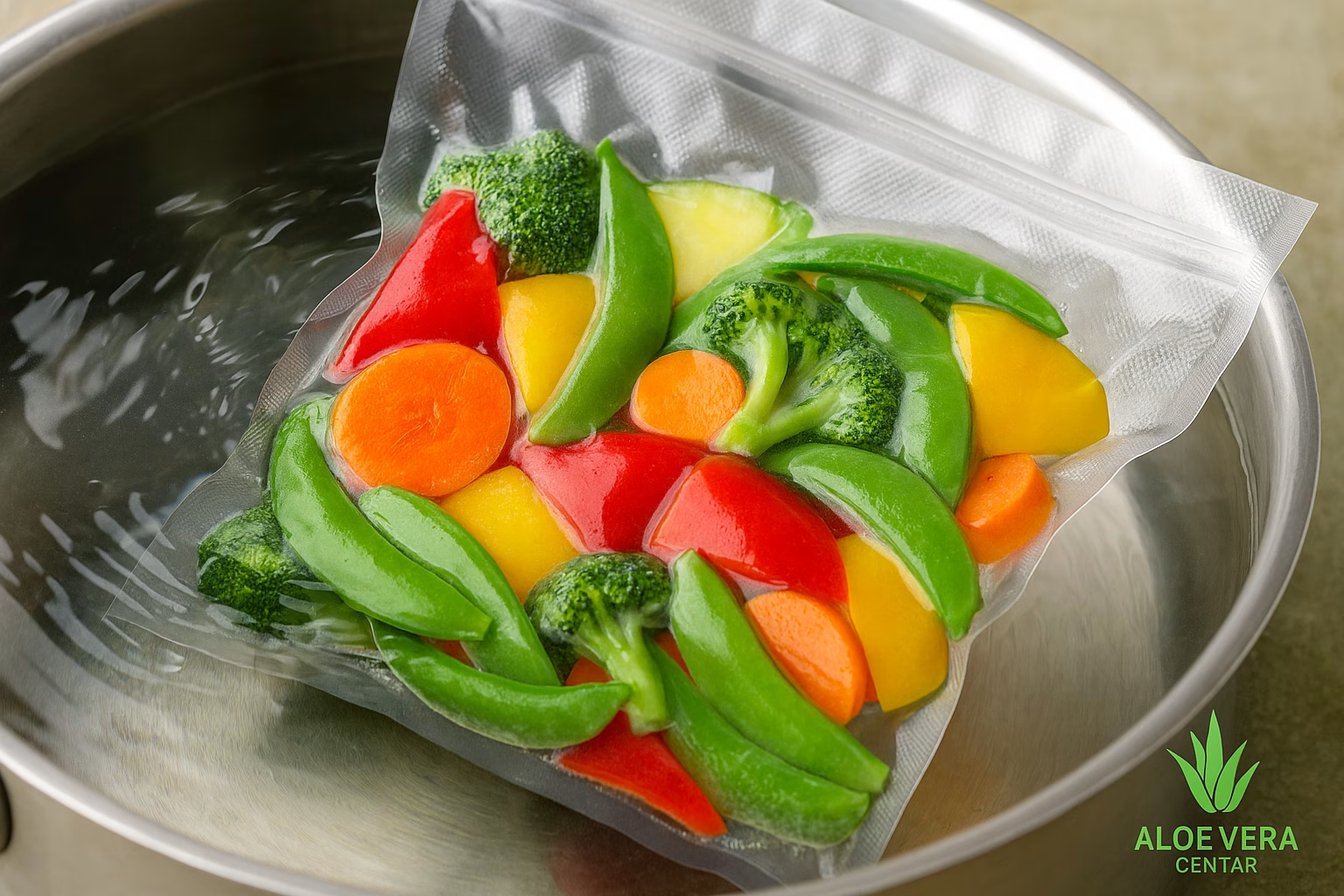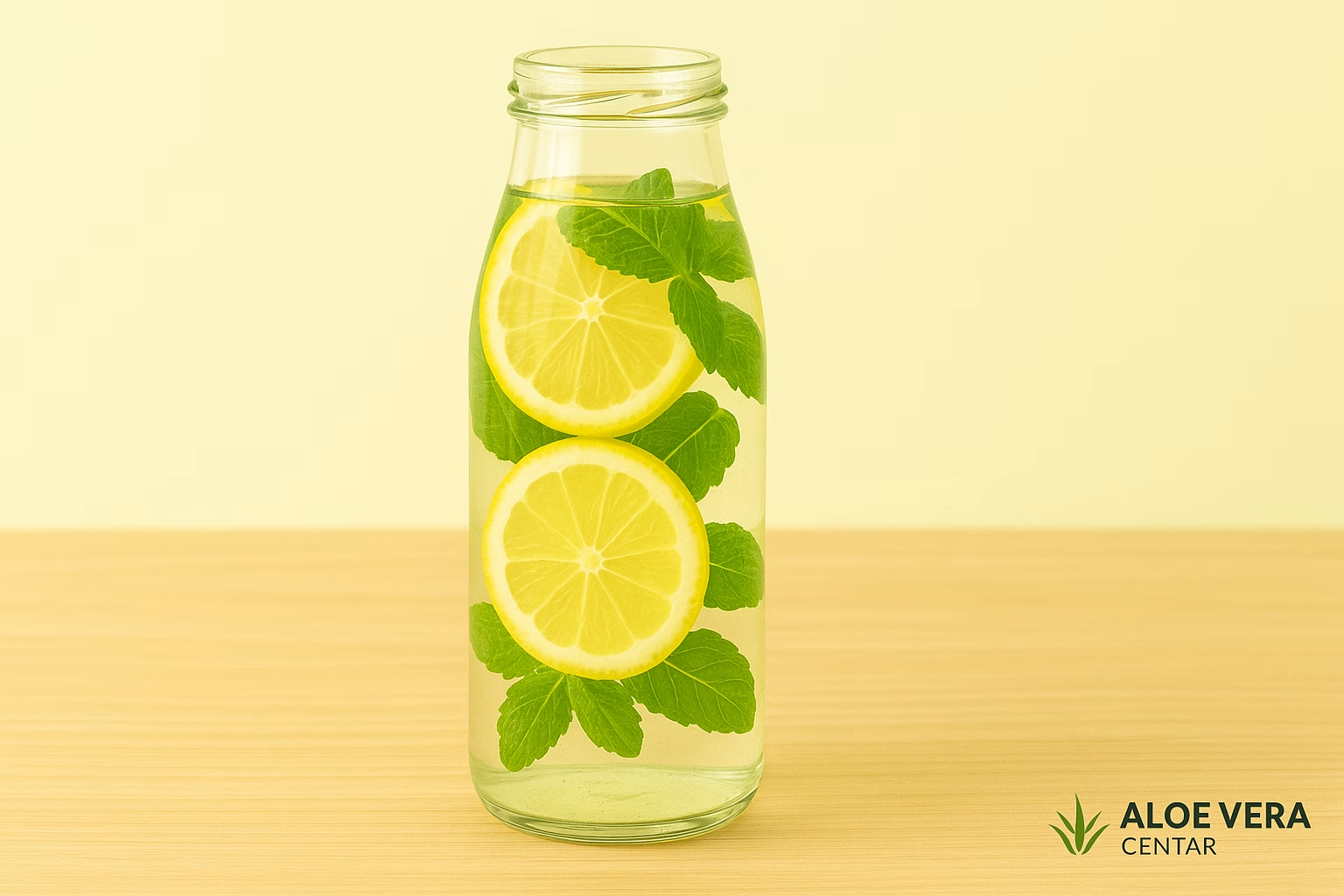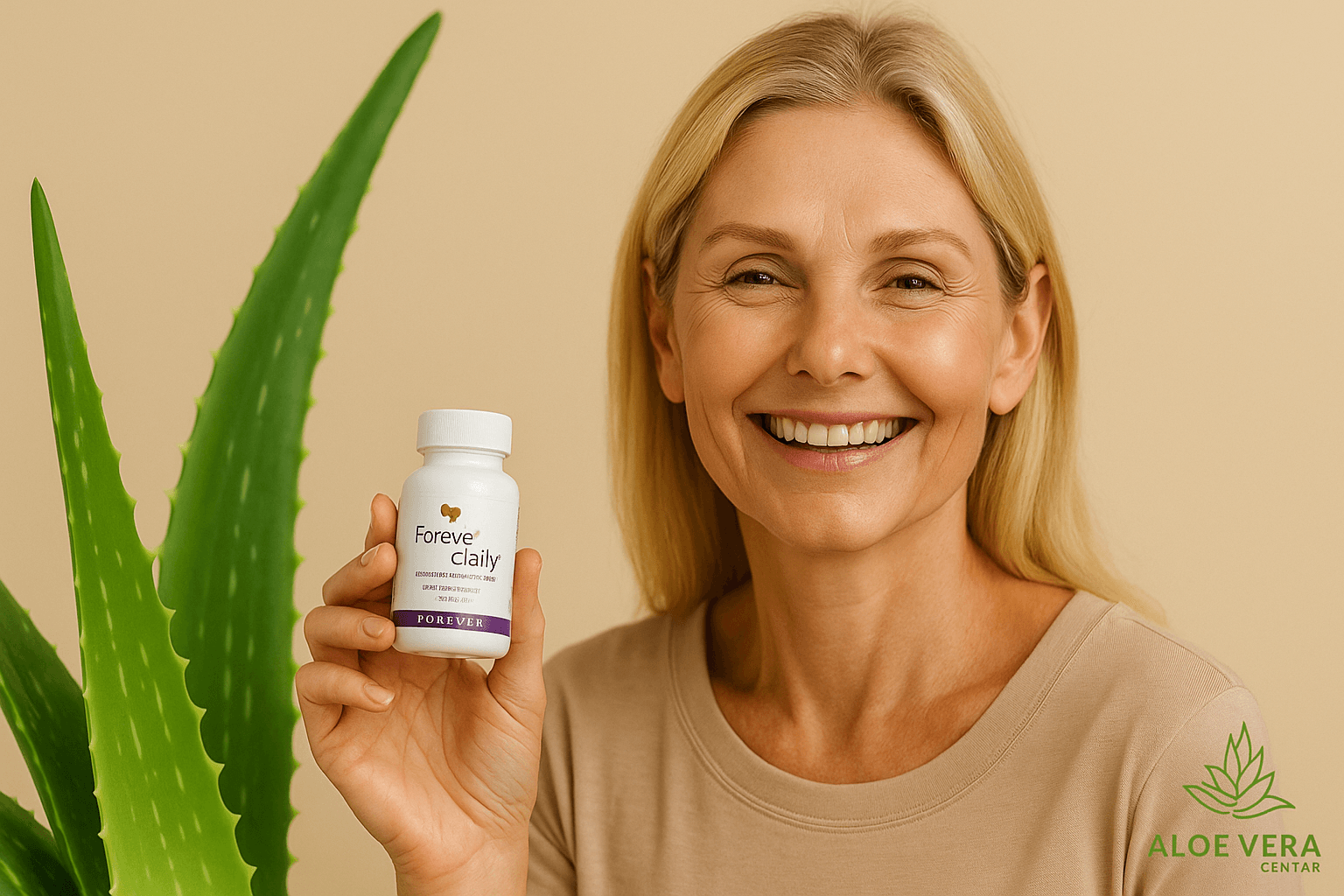
Urticaria – how to treat it naturally?
Urticaria: how to identify and relieve allergic hives
Urticaria, or hives, is one of the most common skin reactions associated with allergies, yet it still often confuses many who encounter it for the first time. This discomfort is characterized by sudden reddish and raised bumps on the skin that cause intense itching, and can sometimes affect deeper layers of tissue.
Even when urticaria lasts only a few hours, it can significantly impair quality of life. In more drastic cases, the reaction can spread to the mucous membranes, and then we are talking about more serious conditions such as Quincke’s edema.
Although classic treatment often includes antihistamines and corticosteroids, many people are looking for more natural approaches that will ease complaints and strengthen immune function in the long term.
Below, learn more about the mechanisms of urticaria, risk factors, and possible treatments, as well as how aloe vera, along with other natural methods, can reduce the unpleasant symptoms of this condition. We’ll cover practical advice, scientific references, and practical product recommendations that can help you get back to your carefree daily life as quickly as possible.
What is urticaria and how does it occur?
Urticaria (hives) is an inflammatory skin reaction that usually manifests itself as a sudden appearance of reddish or white-red, raised “plaques” that can be intensely itchy. The name “hives” comes from the fact that the skin changes resemble nettle burns. Most often, these are superficial changes that disappear within 24 to 48 hours, but in some cases they can last longer, becoming chronic.
The mechanism is mainly based on the excessive release of histamine and other inflammatory mediators from mast cells (immune system cells). This response can be triggered by a variety of causes, including physical stimuli (cold, heat, pressure), medications, foods, insect stings, and many other allergens. When histamine “floods” the bloodstream, the typical itching sensation, redness, and swelling of the tissues occur.
Causes and risk factors
Urticaria can have many faces, and sometimes it can be a real challenge to figure out the exact cause. Some of the more common triggers include:
- Food: Peanuts, tree nuts, shellfish, eggs, strawberries, tomatoes, and milk are just some of the potential allergens in the diet.
- Medications: Antibiotics (such as penicillin), anti-inflammatory drugs (such as ibuprofen), and other pharmaceuticals can cause a severe allergic reaction.
- Insect stings: People who are hypersensitive to bee or wasp stings often develop a skin reaction.
- Physical stimuli: Heat, cold, UV rays, or pressure (e.g. tight clothing) can also cause urticaria to appear.
- Stress: Prolonged stress and emotional tension can intensify or “trigger” a reaction, especially in people who are already prone to allergies.
- Autoimmune mechanisms: In some individuals, hives are associated with autoimmune disorders, in which the body attacks its own tissue.
It is important to note that in some cases, the exact cause is never determined. Also, a single episode of urticaria may be associated with multiple factors at the same time – for example, a combination of certain foods and exposure to stress.
Symptoms and typical forms of hives
The most recognizable symptom of urticaria is the so-called urticaria – raised blisters on the skin that are reddish or white-red in color. Although they most often occur on the trunk, arms and legs, they can appear anywhere on the body, including the scalp. The characteristics of the symptoms are:
- Severe itching: Itching is often made worse by scratching, which can lead to additional skin irritation.
- Sudden onset: Lesions can appear very suddenly, sometimes within minutes of contact with the allergen.
- Short-term: Most hives disappear within 24 to 48 hours, but new outbreaks may appear in other places.
- Possible tissue swelling: In severe cases, urticaria progresses to Quincke’s edema, which manifests as massive swelling of the face, lips, tongue, or throat, which can also endanger the airways.
If the reaction spreads to the mucous membranes, especially in the oral cavity or larynx, emergency medical attention should be sought as it may be a serious, life-threatening condition.
Diagnostic procedure and allergy tests
If you suspect urticaria, the first step is to consult a doctor. Diagnosis is usually based on the clinical picture and a discussion of potential triggers (diet, medications, chemical exposure, etc.). In some cases, blood tests may be done to check immunoglobulin (IgE) and eosinophil levels, which may indicate an allergic reaction.
Allergy testing includes:
- Skin prick test: A drop of allergen is applied to the skin, and then the skin is slightly pricked with a needle so that the allergen enters the surface layer. If there is redness and swelling, the test is positive.
- Patch test (epicutaneous test): Used especially for contact allergies (e.g. cosmetics, metals). The allergen is applied to a patch and kept on the skin for a certain period of time.
- Blood tests: Determination of total IgE and specific IgE antibodies for individual allergens.
Keep in mind that sometimes tests do not reveal a specific allergen, especially if there is a combination of factors or if the reaction is mediated by specific autoimmune mechanisms. In such situations, a longer process of “elimination” diets or lifestyle changes is needed to more precisely identify the cause.
Classic pharmaceutical approach
Conventional treatment for urticaria often includes:
- Antihistamines: The most common medications for relieving itching and reducing redness. They work by blocking H 1 -receptors, preventing histamine from causing an inflammatory reaction.
- Corticosteroids: They are prescribed for severe and acute forms of urticaria or when antihistamines do not work. They have a strong anti-inflammatory effect, but long-term use can have side effects.
- Adrenaline (epinephrine): In exceptional situations of anaphylactic shock and dangerous swelling (e.g. Quincke’s edema), emergency medical intervention with an injection of adrenaline is necessary.
Although conventional medications often provide quick relief from symptoms, they do not necessarily address the underlying cause of the problem in the long term. Therefore, many patients are turning to natural approaches in an attempt to boost their immune system and prevent new episodes of hives.
A natural approach: the importance of the microbiome and the role of aloe vera
Numerous anecdotal reports suggest that hives can be treated naturally, especially when the allergic reaction is mild or intermittent. One potential reason why natural approaches work is because they affect the gut flora, or microbiome. Some experts suggest that improving the balance of bacteria in the gut may help reduce allergic reactions, since a large part of the immune system is located in the digestive tract.
Consumption of aloe vera juice for several weeks, according to the experiences of some users, can alleviate the symptoms of urticaria and contribute to the reduction of inflammatory processes in the body. There are indications that bioactive substances in aloe vera (such as polysaccharides and enzymes) may have anti-inflammatory and regenerative effects on the mucous membrane of the digestive system.
From a scientific perspective, it is worth noting that there is a lot of research being conducted on the anti-allergic effects of herbal preparations. For example, some studies on PubMed have shown that certain herbal extracts can modulate the immune response, but it should always be kept in mind that each organism requires an individualized approach.
How to use aloe vera for urticaria?
In addition to taking aloe vera juice orally to support the digestive and immune systems, aloe vera gel or products can also be used topically, directly on damaged areas of the skin. Here are some recommendations:
- Drinking aloe vera juice: The recommended dosage varies, but it is often advised to drink 30–60 ml 2–3 times a day. After about a week of regular consumption, some users report a reduction in itching and rash.
- Aloe Vera Gelly: Apply a thin layer to the affected area morning and night. The gel provides natural cooling and soothing properties.
- Additional products: Aloe First spray and Propolis cream (or instead of propolis, the purer version of Aloe Vera Gelly if you are allergic) can be used for additional soothing and skin care.
This combination – oral and topical – is a common practice in cases of mild allergic reactions, including hives. Many people notice improvement within a few days, although each situation depends on individual sensitivity and the cause of the allergy.
Monthly therapy and recommended products
Based on years of user experience, Aloe Vera Center recommends the following combination for the monthly treatment of urticaria:
- Three bottles of Aloe vera gel (taken orally): Drink a total of three bottles over the course of a month; the amount is distributed on a daily basis according to the instructions on the packaging or personal needs.
- Aloe First Spray (external use): Spray onto skin to soothe itching and redness.
- Propolis cream or Aloe Vera Gelly for people allergic to propolis: Apply to the affected skin area 1-2 times a day for additional soothing and hydration.
According to user testimonials, the first results (reduction in redness and itching) can be seen within 24 hours of applying this protocol. For an additional discount and easier product procurement, check out this special offer that can further support your needs and plans.
These natural solutions are not a substitute for medical treatment, especially in acute or more severe cases. However, many people use them as a complement to conventional medications, in consultation with a doctor or pharmacist.
The importance of a holistic approach and lifestyle changes
While aloe vera and other natural supplements can help relieve symptoms of hives, it’s often necessary to consider the bigger picture of your health. A holistic approach includes:
- Balanced diet: Reduce your intake of highly allergenic foods (e.g. peanuts, soy, wheat) and increase your intake of fresh fruits, vegetables, and whole grains.
- Regular exercise: Moderate physical activity (walking, yoga, light jogging) helps regulate the immune system and reduce stress.
- Get enough sleep: Poor sleep can worsen allergic reactions and contribute to stress. Aim for 7–8 hours of quality rest.
- Stress reduction: Relaxation techniques like meditation, breathing exercises, or mindfulness can help control hormonal changes that affect the immune system.
- Healthy gut flora: With a variety of probiotic foods (yogurt, kefir, fermented vegetables) and the addition of aloe vera juice, you can achieve a better balance of bacteria in your gut, which can reduce your tendency to allergies.
Complications: Quincke’s edema and anaphylactic shock
The most severe form of urticaria, Quincke’s edema , involves a severe allergic reaction with massive swelling of the subcutaneous tissue and mucous membranes, especially in the face, lips, and throat. This condition can be life-threatening if the swelling affects the airways. Similarly, anaphylactic shock (e.g., from a bee sting in an allergic person) requires prompt medical intervention.
In such extreme situations, natural remedies are usually not enough. It is necessary to contact emergency medical services immediately and administer adrenaline, corticosteroids, or other specific medications prescribed by a doctor.
Frequently Asked Questions (FAQ)
1. How soon after contact with an allergen does the urticaria reaction begin?
In most cases, the reaction occurs within a few minutes to an hour after exposure to the allergen. However, sometimes it can occur with a delay of several hours.
2. Can urticaria occur without a visible trigger?
Yes, there are cases of so-called “idiopathic urticaria” where the exact cause cannot be determined, or it is a combination of minor stimuli. Also, autoimmune mechanisms can play a role when it is not a classic allergy.
3. Do natural remedies help with chronic (long-term) urticaria?
Some people with chronic urticaria experience improvement through lifestyle changes and natural remedies like aloe vera. However, a thorough medical evaluation is advised to rule out other causes.
4. Can aloe vera be used on children with skin problems?
As a rule, quality aloe vera-based products (such as gels or sprays without the addition of aggressive chemicals) are considered safe for children, but always check with your doctor or pharmacist for advice, especially if your child has severe allergic reactions.
Useful links for readers
If you are also suffering from other skin-related problems, we recommend reading the article: How to get rid of eczema, itchy skin and dermatitis naturally . Skin problems are often interconnected and have similar mechanisms, so additional information can help you with comprehensive care.
Conclusion
Hives are a complex and sometimes frustrating skin condition that requires a holistic approach. While conventional medical treatments can quickly relieve symptoms, many people turn to natural methods to prevent new episodes and balance the immune system. Aloe vera, thanks to its potential anti-inflammatory and regenerative effects, has gained popularity as an additional aid in the fight against hives.
However, always keep in mind the importance of consulting a doctor, especially in cases of severe reactions or uncertain causes. Combined with a balanced diet, reduced stress, adequate fluid intake, and regular physical activity, natural solutions can significantly improve quality of life and speed up skin recovery.
NOTE: Aloe Vera Center is an independent business partner of Forever Living Products. The recommended products are based on many years of user experience and do not replace medical therapy. Dietary supplements are not a substitute for a balanced diet.
This content is not a substitute for professional medical advice, diagnosis or treatment. If you have doubts about your own health, contact a professional. In serious cases (Quincke’s edema, anaphylaxis), seek emergency medical help.

